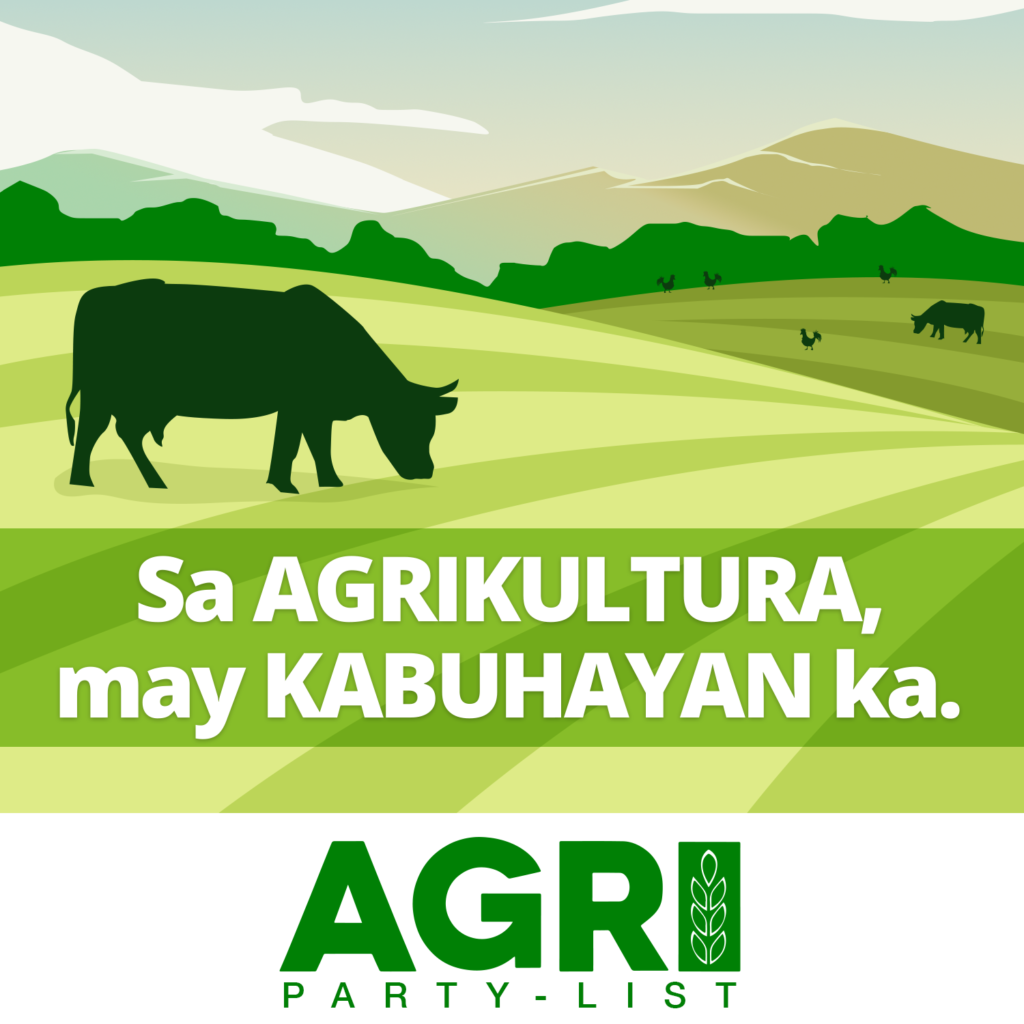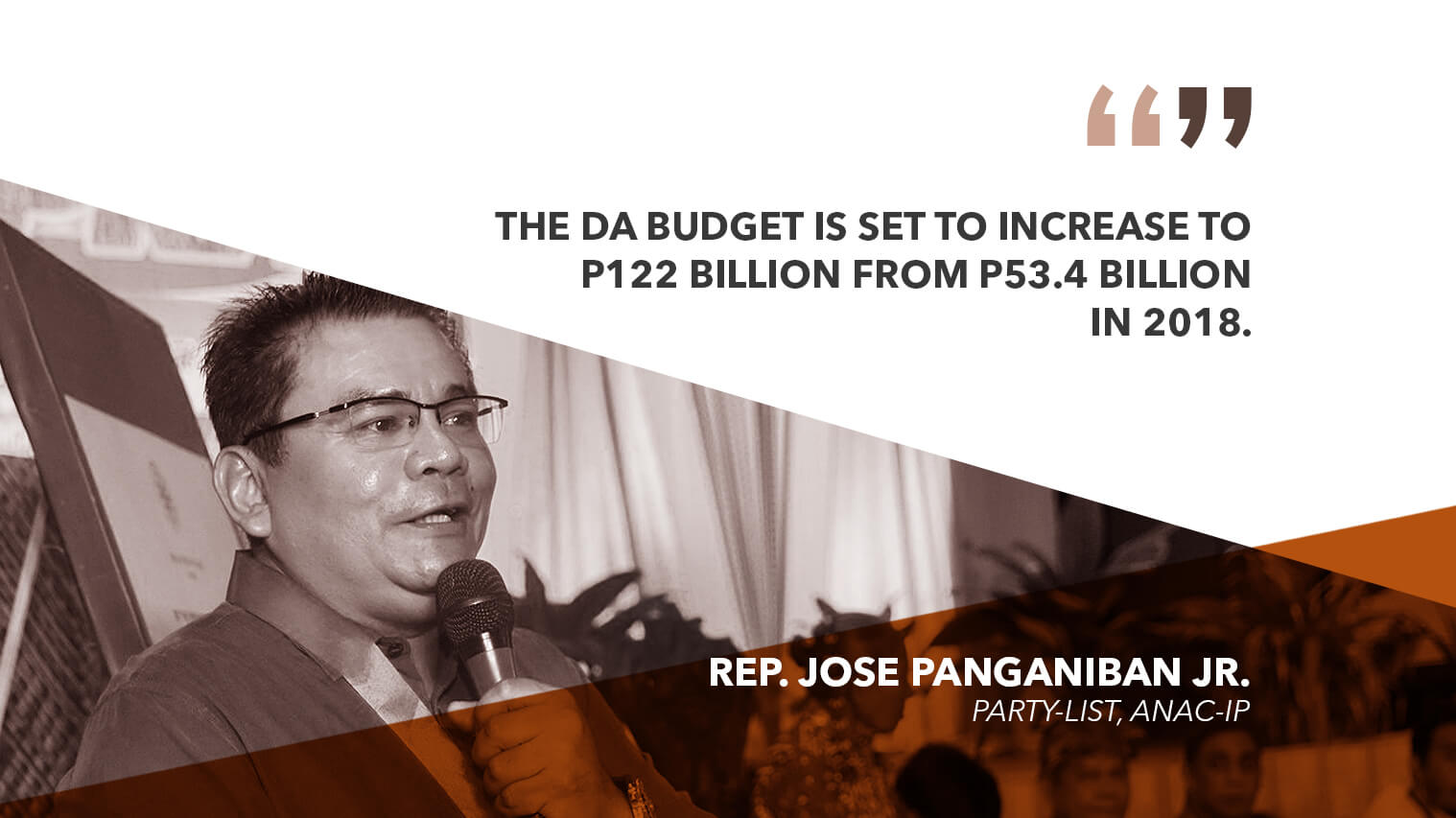With the budget of the Department of Agriculture set to be more than doubled in 2019, House Agriculture Committee Chair and ANAC-IP Rep. Jose T. Panganiban, Jr. said there is no excuse for the agency to not deliver on their target of improving the agriculture sector’s contribution to development.
“The DA budget is set to increase to P122 billion from P53.4 billion in 2018. Nasa DA na ang bola, it’s now up to them to ensure that palay production and the whole agriculture sector becomes more productive next year,” said Panganiban.
As the rice tariffication bill is set to become law, Panganiban urged the DA to step up its efforts to increase palay output next year, saying the country cannot rely solely on imports to fulfill local demand for rice.
Latest figures from the Philippine Statistics Authority (PSA) have revealed that the country’s palay output has grown by a measly 1.3 percent yearly in the last five years.
“The DA should use the funds they are set to receive from tariffs to ensure that the barriers to farmers’ competitiveness are addressed.”
Data from the PSA also showed that during the past five years, the country’s palay production grew to 19.28 million metric tons (MT) in 2017 from 18.44 million MT in 2013.
“We cannot achieve sustainable development if we remain reliant on imports. Hindi pwedeng maging kampante tayo dahil magkakaroon na ng batas na tutulong sa pagdagsa ng murang bigas,” said the solon.
The agriculture sector suffered a decline of 0.4 percent in the third quarter due to the decline in the production of corn (14.4 percent), palay (5.4 percent), fishing (1.1 percent) and cassava (3.1 percent).
“It’s now up to them to ensure that palay production and the whole agriculture sector becomes more productive next year.”
The dismal performance of agriculture was pinpointed as a key contributor to inflation.
“The DA should use the funds they are set to receive from tariffs to ensure that the barriers to farmers’ competitiveness are addressed,” Panganiban said.
These barriers include the lack of mechanization, good seeds, and easier access to cheap credit, among others, he added.


